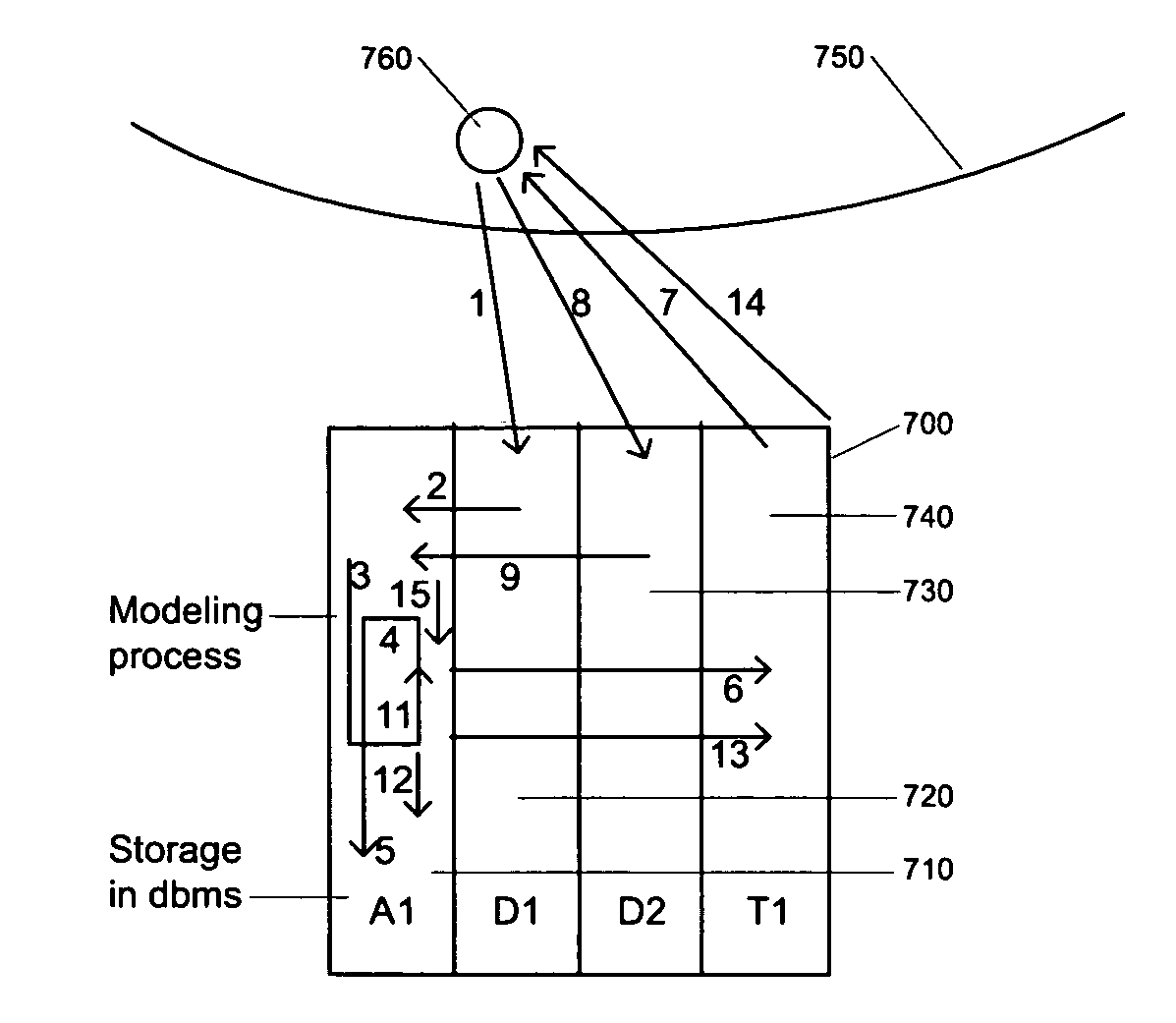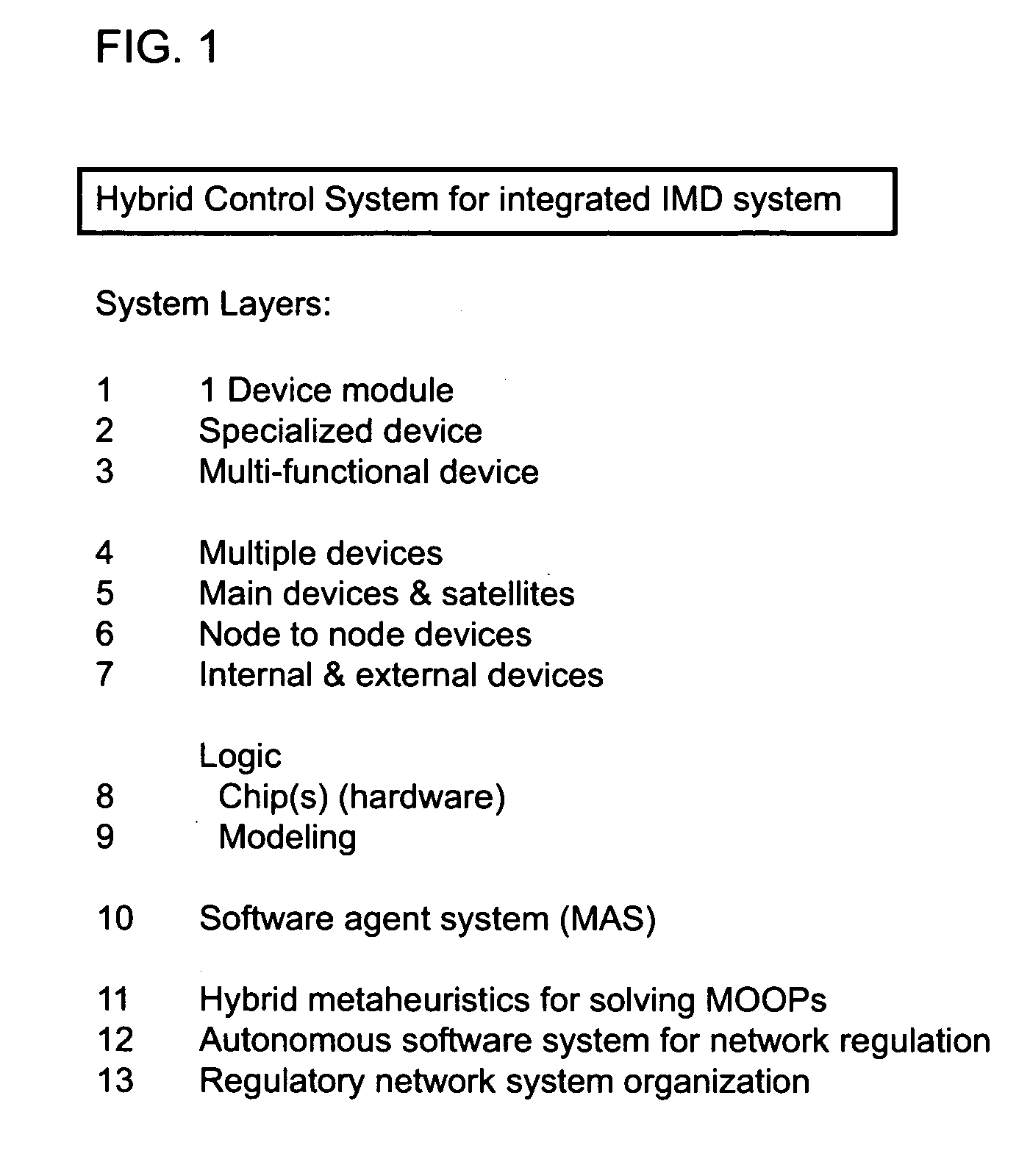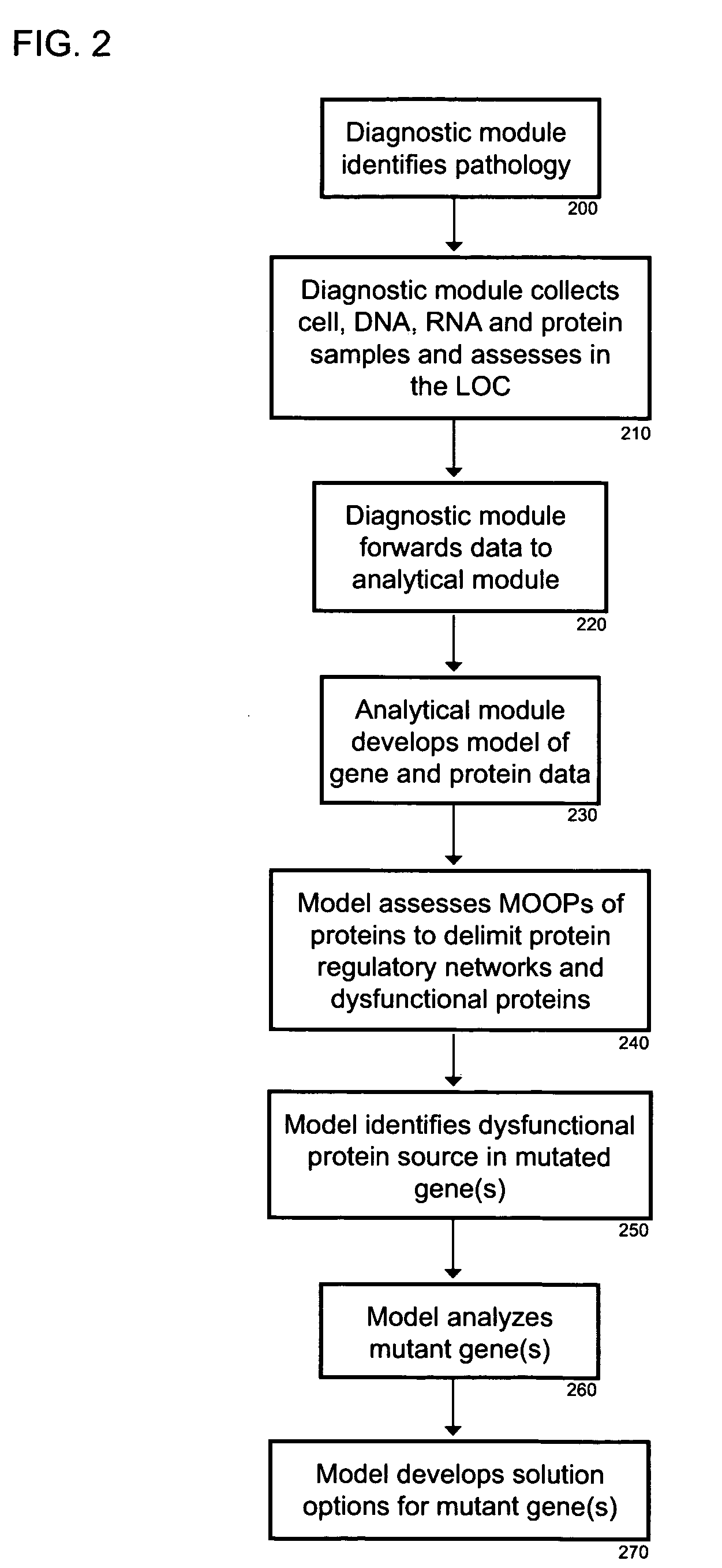Intelligent medical device system dynamics for biological network regulation
a biological network and intelligent technology, applied in the field of dynamic operation of medical devices and components, can solve the problems of inability to apply complex computing models to medical devices, limitations of each prior medical device, and limited use of nanotechnology to particles, so as to facilitate automated and rapid prototyping of therapies, improve the efficiency of therapeutic modality, and effectively manage complex regulatory networks
- Summary
- Abstract
- Description
- Claims
- Application Information
AI Technical Summary
Benefits of technology
Problems solved by technology
Method used
Image
Examples
Embodiment Construction
(1) Hybrid Control System for Integrated iMD System
[0023]The hybrid control system for the integrated iMD system consists of thirteen layers. On the first layer is a single iMD device module. On the second layer is a specialized iMD. On the third layer is a multifunctional iMD.
[0024]Multiple devices are on the fourth layer. The fifth layer contains the main device and satellite devices, while the sixth layer consists of a configuration of node-to-node devices. On the seventh layer of the system are internal and external devices.
[0025]The logic of the system is organized on the eighth and ninth layers, with semiconductor hardware on the eight layer and modeling analysis on the ninth layer. The software system is on the tenth layer, featuring a multi agent system (MAS). Hybrid metaheuristics are used for solving MOOPs at the eleventh layer. The autonomic computing system for network regulation is at the twelfth layer and the regulatory network organization for system plasticity occurs...
PUM
 Login to View More
Login to View More Abstract
Description
Claims
Application Information
 Login to View More
Login to View More - R&D
- Intellectual Property
- Life Sciences
- Materials
- Tech Scout
- Unparalleled Data Quality
- Higher Quality Content
- 60% Fewer Hallucinations
Browse by: Latest US Patents, China's latest patents, Technical Efficacy Thesaurus, Application Domain, Technology Topic, Popular Technical Reports.
© 2025 PatSnap. All rights reserved.Legal|Privacy policy|Modern Slavery Act Transparency Statement|Sitemap|About US| Contact US: help@patsnap.com



